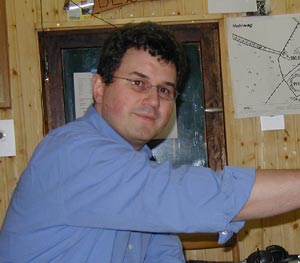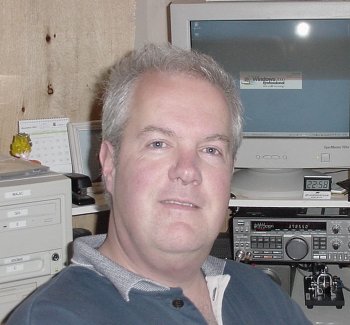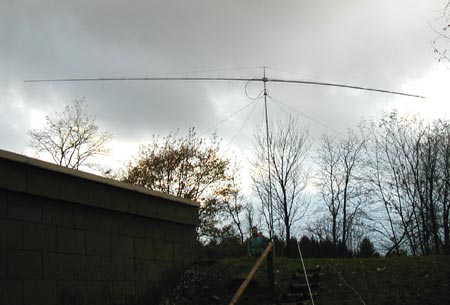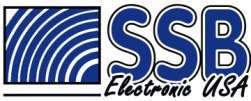Harry, DL2DAO
VHF-, UHF-, SHF-Contesting,
RF-technique

| back to main page |
DXpedition's NEWS |
| The idea |
DXpeditioners |
Our equipment |
Propagation |
| Mode |
The QTHs |
Our sponsors |
Activities |
| Remembrance of the leonides storm at
November 17th 1998: In the early morning hours a great number of vhf-logs was filled with callsigns from all over Europe. An 80m-amateur couldn't find the difference to his shortwave-log... Meteorscatter-bursts occured every minute and despite the nighttime the 144mhz-band was crowded with DX-stations. In the days after you could hear only one topic in the discussions on the band: What happened to 2 meters that morning? Someone was heating up the situation by saying "a 4X-station had been heard in PA0..." Unfortunately noone could verify this statement but there was the question: Can we work over 2400 km during extraordinary meteorscatter-conditions like this? In the "common" range of about 2000 km signal strenghts often reached far over S9 and some reflections lasted several minutes. How about the probability of two meteors crashing into ionosphere the same time and on the line to a far away DX-station? How about double-hop meteorscatter? In 1995 the Irish amateur radio organization IRTS launched a special award, the Brendan-Trophies for the two stations who establish a complete two way contact on vhf between Europe and America across the Atlantic. Some tests in the past with John, VE1ZJ, failed but we were not discouraged. We decided to go all the way during the predicted meteor storm in November 2002 (predictions by Asher/McNaught, Jenniskens, Lyytinen). First we tried to find reasonable skedpartners in Newfoundland - as close as possible to Europe - and we ourselves were heading for a trip to southwest Ireland - as close as possible to north America... |
Harry, DL2DAO VHF-, UHF-, SHF-Contesting, RF-technique |

|

|
Nico, DK5DQ member of VHF-DX-Gruppe DL-West 
VHF-, UHF-Contesting VHF-DX |
| Volker, DL5DAW VHF-, UHF-, SHF-Contesting RF-technique |

|


|
In Canada Harry joins the hams of Society Of Newfoundland Radio Amateurs, SONRA, who made up all preparations at their site and offer a great placed QTH. Many emails and telephone calls to Paul, VO1HE, and Graham, VE6KJ / VO1DZA, were made to discuss and solve all the "little" problems of such an event. Thank you, guys! |
| In Ireland we were happy to find two radio amateurs, Tony, EI8JK (ex EI2FSB), and Tony, EI7BMB, who have been helping us in finding a good QTH. Thanks also to you! |
| The rig we are going
to use is our equipment during vhf-contests in Germany and Europe. Some adjustments have been done and we hope all will work properly... In Ireland: Station 1: Kenwood TS-950SDX SSB-Electronic LT-2S MK II SSB-Electronic 200 Watt Transistor-PA Tube-linear with 3CX800 SSB-Electronic MHP 145 preamp 0,5 dB M² 24 elements Yagi 
Station 2: Yaesu FT-847 MOSFET-PA BEKO HLV-1200 SSB-Electronic Super-Amp 2000 2 x 11 elements Yagis FX224 Flexa plus Notebooks, DTR, ETM-9C, DAT-Recorder,... In Newfoundland: Kenwood TS-850 S SSB-Electronic LT-2S MK II SSB-Electronic MHP 145 preamp 0,5 dB Tube-linear mit 3CX800 2 x 12 elements Yagis M² plus Notebooks, Cassettenrecorder, Videocamera,... |
| To bridge the 3100 km between Newfoundland
and southwest Ireland you probably need an unusual kind of propagation.
If it really occurs and how it looks like is hard to tell. In our opinion perhaps the following ways of DX-propagation are suitable: |
| 1. Double meteor reflections, i.e. the
transmitted signal is reflected at the first meteor then at the second
and some rf-energy reaches the receiver. TX, meteor1, meteor2 and RX
mostly have to be along one direct line. |
| 2. Double-hop-reflections, i.e. signal
from tx - 1st meteor - ground - 2nd meteor - RX. But the loss in signal
when reflected on the ground reduces the final signal strength a lot. |
| 3. A single reflection at a meteor in
exceptional altitude (>190km). Normally meteors burn in heights of
up to 125 km, so higher reflections seem impossible. But Dr.
Noah Brosch / Israel mentioned reflections at 240 km over the ground
level using
a radar-system! |
| 4. A combination of different propagation
modes: e.g. tropospherical ducting plus a single hop meteor reflection. |
| 5. During the peak times of the meteor
storm the E-layer of our ionosphere will be bombed by large numbers
of dust particles (visibles and unvisibles!). Maybe the electron-concentration
inside E-layer rises enough to scatter back 144MHz-signals. Maybe Volker,
DF5AI has found out something like this during
Leonides 2001 on 50 MHz...7 |
Anyhow, after november 19th we will know better! |
| For we cannot estimate the number and
quality of reflections we decided to use the new meteorscatter-mode
FSK441
developed by Joe, K1JT
(new version 2.9.0. available since November 11th!). Quite weak reflections often are decodable using this software. But if we find out unexpected good meteor-reflections we are going to change from FSK441 to HSCW-mode immediately after finishing the first contact to try it again in high speed CW. Joe's brilliant software is "state of the art", no doubt, but we like better to be able to decode the received signals with our own brains. It just depends on the reflections' quality... |
| The qth in southwest
Ireland for the transatlantic attempt is not fixed, yet. Our holiday
cottage in IO42XA is ok for the test but if weather permits we want to
go to a mountain in IO41VS: 350m asl and absolutely nothing except water
until Newfoundland. We try to activate IO42 at least saturday evening and sunday (16th - 17th november). Due to a mountain we have no good take off to Europe, operation from 80 to 240 degrees will be nearly impossible. We only can offer sidescatter pointing to about 70 degrees. A friendly weather forecast will send us to IO41 on monday to build up the equipment on top of the mountain. After finishing the installation we'll be on air for tests in ms or tropo. Tuesday afternoon we break down the equipment to go back to our cottage. The qth in Newfoundland Admiralty House Museum and Archive in Mount Pearl, Newfoundland, approximately 8 miles west of St. John’s. |
| No DXpedition without
sponsoring! Here is a list containing all helpful persons ho made it possible: Ingenieurbüro Rainer Schlösser, Pinneberg Firma SSB-Electronic, Iserlohn 
Firma SSB-USA, Mountaintop, PA, USA 
Diethmar Daude, DF7KF, Nörvenich Firma Nissan Schleichert, Ennepetal 
|
Flexa Yagis preamps, technical assistance M²-Yagis Aircom plus coaxial cable BEKO HLV-1200 Transporter |
To all of our sponsors: MANY THANKS!!! |
| Since we do not know
from where and when we will be qrv we unfortunately must tell you: There are NO SKEDS in advance! Times of operation and our qth will be found in the DX-cluster network. We are going to use 144.345 MHz for european traffic from IO41/IO42. To prevent from qrm the operating frequency for the transatlantic attempt will be fixed right before we start. As far as we can see, now, neither DX-Cluster nor Internet will be available for us! Please listen to the European vhf-net on 14.345 MHz as we try to inform you there! |